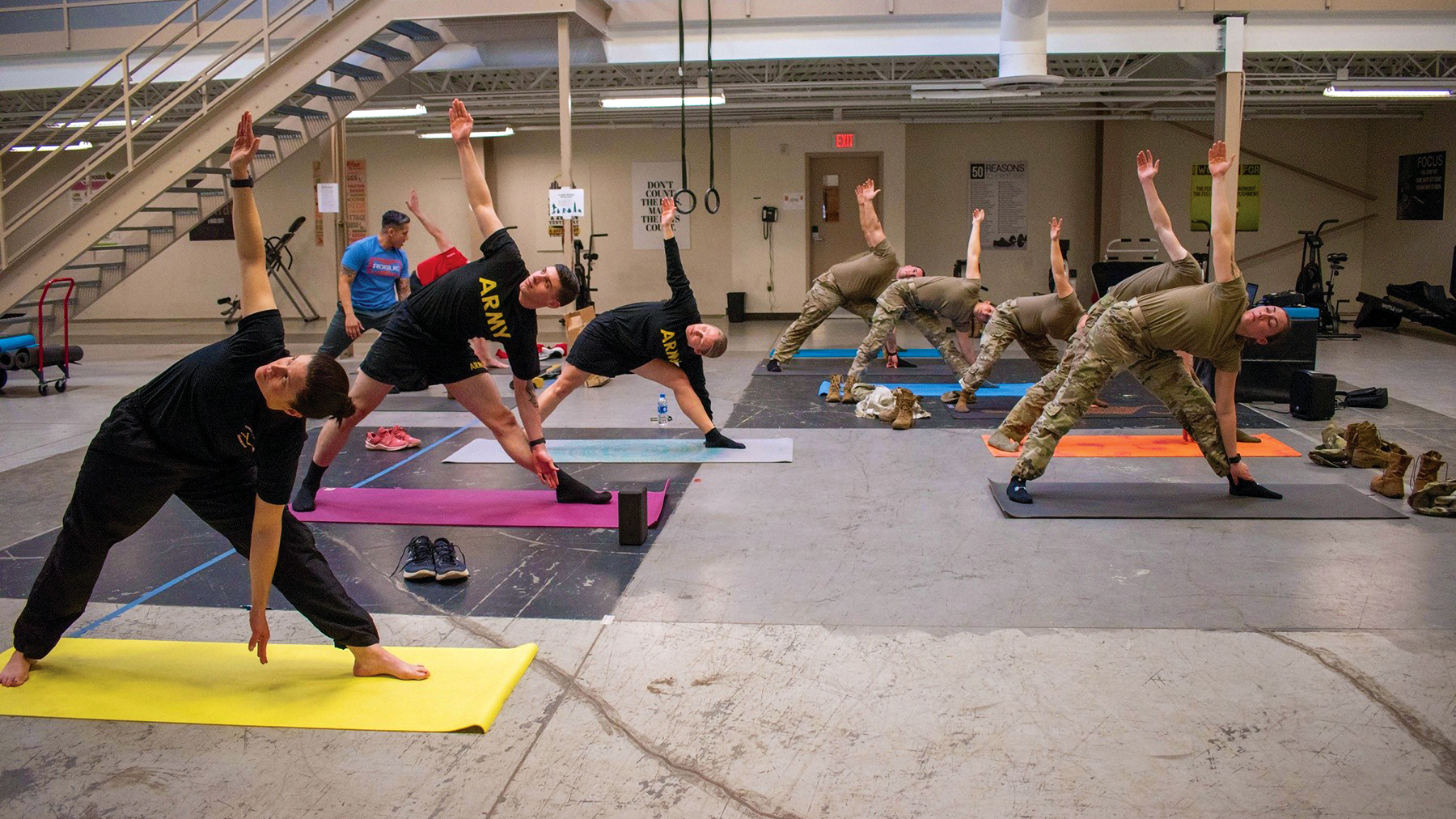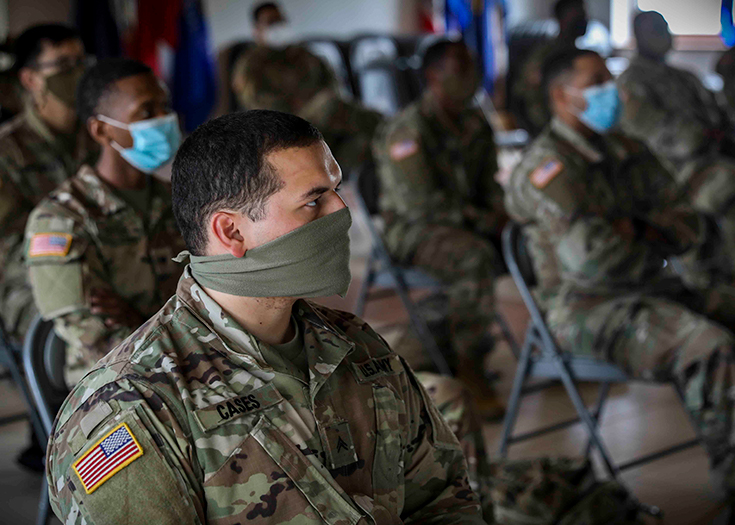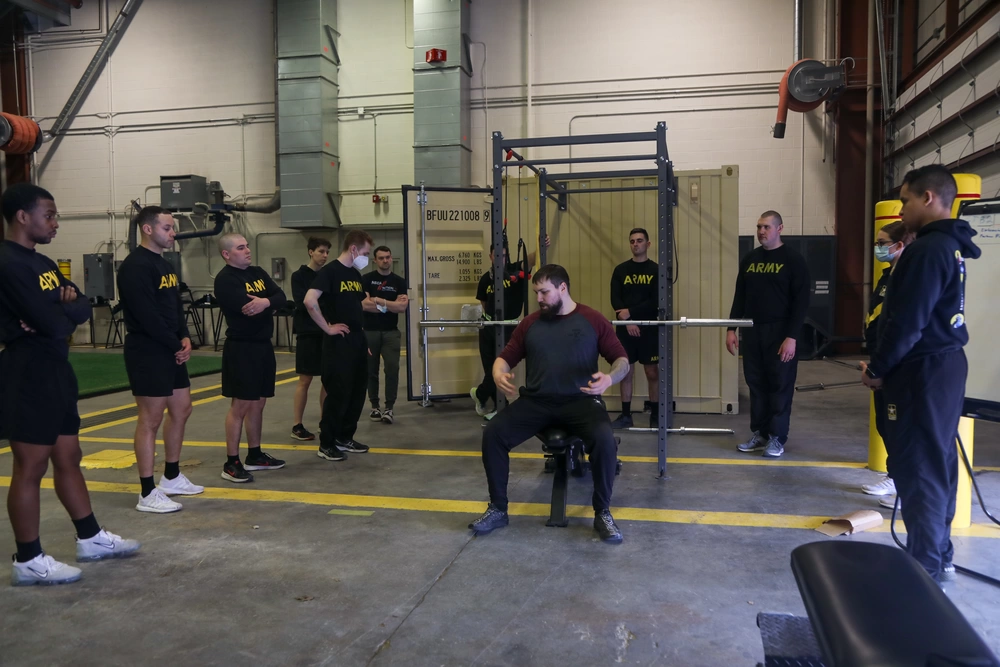Exercise Daily – In the modern-day military, peak performance is not solely determined by physical strength but also by mental resilience, nutrition, sleep quality, and injury prevention. The Army recognizes the significance of a holistic approach to health and fitness to enhance the capabilities and overall well-being of its soldiers. This article explores the Army’s holistic health and fitness approach, focusing on various aspects that contribute to peak performance.
The Army’s holistic health and fitness approach to peak performance for athletes is a comprehensive program designed to optimize the physical and non-physical readiness of soldiers across the force. Recognizing the importance of total Army readiness, army leaders have invested in a holistic health and fitness program known as H2F. This program focuses on five domains of the army, including physical, nutritional, mental, spiritual, and sleep, aiming to sustain and improve soldier readiness and lethality.
Army’s Holistic Health and Fitness Approach
The Army’s holistic health and fitness approach acknowledges that physical fitness, mental resilience, proper nutrition, sleep, and injury prevention are interconnected factors that collectively impact the performance of soldiers. By addressing each of these components, the Army aims to optimize the physical, mental, and emotional well-being of its personnel.
By integrating strength and conditioning coaches, athletic trainers, occupational therapists, and other personnel, the army’s holistic health and fitness program reduces injury rates, enhances soldier performance readiness, and fosters morale. Under the umbrella of this approach, brigade combat teams undergo specialized training programs that qualify soldiers for completion of the Army Physical Fitness Test (APFT) and prepare them for operational and sport-specific demands.

Holistic Health and Exercise
Incorporating Exercise into a Holistic Lifestyle
1. Finding the Right Exercise Routine
To incorporate exercise into a holistic lifestyle, it is essential to find activities that resonate with your interests and preferences. Experiment with different forms of exercise, such as yoga, dance, swimming, or hiking, to discover what brings you joy and fulfillment. When you enjoy the exercise, it becomes easier to make it a regular part of your routine.
2. Creating a Balanced Exercise Plan
A holistic exercise plan should encompass various components to address the different dimensions of well-being. It should include cardiovascular exercises, strength training, flexibility exercises, and activities that promote mindfulness and relaxation. By combining different types of exercises, you can create a well-rounded routine that nourishes your body, mind, and spirit.
Holistic Exercise Practices
1. Yoga and Holistic Health
Yoga, a centuries-old practice originating from ancient India, offers a holistic approach to exercise and well-being. It combines physical postures, breath control, and meditation to enhance flexibility, strength, balance, and mental focus. Yoga’s mind-body-spirit integration aligns perfectly with the principles of holistic health.
2. Tai Chi and Holistic Health
Tai Chi is a Chinese martial art that has evolved into a gentle, flowing exercise system. It emphasizes slow, deliberate movements coordinated with deep breathing and focused attention. Tai Chi enhances balance, flexibility, relaxation, and inner harmony, making it a valuable holistic exercise practice.
3. Pilates and Holistic Health
Pilates is a low-impact exercise method that focuses on core strength, flexibility, and body awareness. It emphasizes controlled movements and proper alignment, promoting overall body conditioning and improved posture. Pilates’ emphasis on breath and concentration aligns with the principles of holistic health.
4. Mindful Walking and Holistic Health
Mindful walking involves bringing a sense of awareness and presence to the act of walking. It allows individuals to connect with their surroundings, be in the present moment, and engage in gentle physical activity. Mindful walking promotes relaxation, mental clarity, and a deeper connection with nature.

Nurturing Holistic Health Beyond Exercise
1. Balanced Nutrition
To support holistic health, it is crucial to nourish the body with a balanced and nutritious diet. Consuming whole foods, including plenty of fruits, vegetables, lean proteins, and healthy fats, provides the essential nutrients needed for optimal well-being.
2. Adequate Sleep
Quality sleep plays a vital role in holistic health. Establishing a consistent sleep routine, creating a peaceful sleep environment, and practicing relaxation techniques can contribute to restful and rejuvenating sleep, supporting overall wellness.
3. Stress Management Techniques
Effectively managing stress is essential for holistic health. Engage in stress-reducing activities such as meditation, deep breathing exercises, journaling, or engaging in hobbies that bring you joy. Find what works best for you in reducing stress and make it a regular part of your routine.
4. Emotional Well-being
Nurturing emotional well-being is a critical aspect of holistic health. Seek support from loved ones, practice self-care, and consider therapy or counseling if needed. Emotional well-being contributes to overall happiness and fulfillment in life, enhancing the holistic health journey.
Physical Fitness: Building Strength and Endurance
1. Strength Training
Strength training is a fundamental aspect of the Army’s holistic health and fitness approach. It involves exercises that target major muscle groups, such as squats, deadlifts, bench presses, and pull-ups. By engaging in regular strength training, soldiers improve their muscular strength, endurance, and power, which are essential for carrying out physically demanding tasks on the field.
The program’s effectiveness is evident through the evaluation and optimization of individual and unit performance, as well as the rehabilitation of soldiers after injury. Through the publication of a comprehensive manual and the implementation of consistent training and support, the army’s holistic health and fitness program bridges the gap between physical and non-physical domains, ensuring that soldiers perform at their peak both on and off the field.
Holistic health is an approach to health that considers the physical, mental, emotional, and spiritual aspects of a person. Wet cupping can be seen as a holistic health practice because it can address all of these aspects.
2. Endurance Training
Endurance training focuses on improving cardiovascular fitness, stamina, and endurance. It includes activities like running, swimming, cycling, and circuit training. Regular endurance training helps soldiers develop the necessary cardiovascular capacity to sustain prolonged physical exertion during missions and training exercises.

Mental Resilience: Strengthening the Soldier’s Mind
1. Stress Management and Mindfulness Techniques
The Army recognizes the significance of mental resilience in combatting stress and adversity. Stress management techniques, such as deep breathing exercises, meditation, and mindfulness practices, are incorporated into training programs to enhance focus, reduce anxiety, and promote emotional well-being. These strategies enable soldiers to maintain composure in high-pressure situations and make sound decisions.
2. Cognitive Skills Training
Cognitive skills training aims to enhance soldiers’ mental agility, problem-solving abilities, and decision-making skills. Through various cognitive training exercises and simulations, soldiers learn to analyze complex situations, think critically, and adapt swiftly to changing environments. This training equips them with the cognitive tools necessary to excel in dynamic and demanding operational scenarios.

Proper Nutrition: Fueling the Soldier’s Body
1. Balanced Diet and Macronutrient Distribution
Proper nutrition plays a pivotal role in supporting the physical and mental demands of Army personnel. A balanced diet, comprising a variety of nutrient-dense foods, ensures soldiers receive adequate vitamins, minerals, proteins, carbohydrates, and healthy fats. Macronutrient distribution is optimized based on individual needs, considering factors such as activity level, body composition, and mission requirements.
2. Importance of Hydration
Hydration is crucial for maintaining optimal performance and preventing dehydration-related issues. The Army emphasizes the importance of adequate hydration before, during, and after physical exertion. Proper hydration aids in regulating body temperature, optimizing cognitive function, and supporting musculoskeletal health.
Sleep and Recovery: Essential for Optimal Performance
1. Importance of Quality Sleep
Sleep is an essential component of the Army’s holistic health and fitness approach. Sufficient and high-quality sleep is vital for physical and cognitive recovery, memory consolidation, and overall well-being. The Army educates soldiers on sleep hygiene practices and emphasizes the importance of establishing regular sleep patterns to ensure optimal performance.
2. Recovery Strategies and Techniques
In addition to sleep, active recovery techniques such as stretching, foam rolling, and low-intensity exercises are incorporated into soldiers’ routines to enhance recovery and prevent injuries. The Army provides resources and guidance on effective recovery strategies, enabling soldiers to minimize downtime and maintain their peak performance levels.
Injury Prevention and Rehabilitation: Ensuring Longevity
1. Prehabilitation Exercises and Injury Prevention
To mitigate the risk of injuries, the Army emphasizes prehabilitation exercises that target specific muscle groups and movement patterns. By integrating these exercises into training programs, soldiers can strengthen weak areas, improve flexibility, and reduce the likelihood of injuries. This proactive approach ensures soldiers are physically prepared and resilient.
2. Rehabilitation Programs and Support
In the unfortunate event of an injury, the Army provides comprehensive rehabilitation programs and support to facilitate the recovery process. Physical therapy, specialized training, and access to medical professionals help injured soldiers regain their strength, mobility, and functionality. The Army’s commitment to rehabilitation enables soldiers to return to active duty with minimized long-term consequences.
Wellness and Holistic Health
The mind-body connection forms the foundation of holistic health. It emphasizes the interrelationship between our thoughts, emotions, and physical well-being. When our mental and emotional state is in harmony, our physical health improves, and vice versa. Recognizing this connection enables us to adopt holistic practices that promote overall wellness.

1. Exploring Physical Wellness
Physical wellness encompasses activities and habits that contribute to maintaining a healthy body. It involves regular exercise, balanced nutrition, adequate sleep, and preventive care. Engaging in physical activities such as cardio exercises, strength training, and flexibility routines helps improve cardiovascular health, boost metabolism, and strengthen muscles and bones.
2. Embracing Mental and Emotional Wellbeing
Mental and emotional wellbeing are essential components of holistic health. Prioritizing self-care, managing stress effectively, and seeking support when needed are crucial for maintaining optimal mental health. Engaging in activities like meditation, mindfulness, journaling, and therapy can help manage anxiety, depression, and other mental health challenges.
3. Enhancing Spiritual Wellness
Spiritual wellness refers to finding meaning, purpose, and a sense of connection beyond oneself. To achieve this, it is essential to engage in practices that nurture the spirit while exploring personal beliefs and values. There are various activities that can contribute to spiritual wellness, such as meditation, prayer, spending time in nature, or participating in community gatherings that align with one’s spiritual or religious beliefs.
Meditation, for instance, allows individuals to quiet the mind, cultivate self-awareness, and tap into a deeper sense of spirituality. By dedicating time to meditation, one can gain clarity, find inner peace, and foster a stronger connection to their spiritual self.
Prayer is another powerful practice that individuals can engage in to enhance their spiritual wellness. It involves expressing gratitude, seeking guidance, and connecting with a higher power or the divine. Prayer can provide solace, comfort, and a sense of belonging.
Holistic Health and Weight Loss
Holistic health revolves around the idea of considering the whole person—body, mind, and spirit—in achieving optimal health. It recognizes that all aspects of our lives are interconnected, and by addressing each component, we can promote balance and well-being. Holistic health emphasizes the integration of various practices, including nutrition, exercise, stress management, and mental well-being, to foster overall vitality.
The Connection between Holistic Health and Weight Loss
Weight loss is often approached from a purely physical perspective, focusing solely on diet and exercise. However, a holistic approach recognizes that weight loss is a complex process influenced by numerous factors, including emotional well-being, lifestyle choices, and environmental factors. By considering the interplay between these elements, holistic health can provide a comprehensive framework for sustainable weight loss.
Key Principles of Holistic Weight Loss
1. Mindful Eating
Mindful eating involves cultivating awareness and attention to the present moment while consuming food. It encourages savoring each bite, paying attention to hunger and fullness cues, and fostering a healthy relationship with food. By practicing mindful eating, you can develop a deeper connection with your body’s nutritional needs and make conscious choices that support weight loss.
2. Balanced Nutrition
A balanced and nutritious diet forms the foundation of holistic weight loss. Firstly, it is important to focus on consuming whole, unprocessed foods that are rich in essential nutrients. In particular, prioritize fresh fruits and vegetables, lean proteins, whole grains, and healthy fats. These food groups provide the necessary vitamins, minerals, and antioxidants to support your weight loss journey.
3. Regular Physical Activity
Engaging in regular physical activity is crucial for holistic weight loss. Incorporate a variety of exercises that you enjoy, such as cardio, strength training, and flexibility exercises. Aim for at least 150 minutes of moderate-intensity activity per week and include strength training exercises twice a week to build lean muscle mass, which aids in burning calories.
4. Stress Management
Stress can significantly impact weight loss efforts. Adopt stress management techniques like meditation, deep breathing exercises, and journaling to reduce stress levels. Chronic stress can lead to emotional eating and hormonal imbalances, which can hinder weight loss progress. Prioritize self-care activities to promote relaxation and emotional well-being.
5. Quality Sleep
Sufficient and restorative sleep is essential for holistic weight loss. Aim for 7-9 hours of quality sleep each night. Lack of sleep can disrupt hormone regulation, increase cravings for unhealthy foods, and reduce overall energy levels, making it harder to maintain a healthy weight. Establish a relaxing bedtime routine and create a sleep-friendly environment for optimal rest.

The Role of Mind-Body Practices in Holistic Weight Loss
1. Meditation and Mindfulness
Practicing meditation and mindfulness can enhance self-awareness, reduce emotional eating, and improve body satisfaction. These techniques promote a deeper connection with your body, aiding in conscious decision-making regarding food choices and portion control.
2. Yoga and Tai Chi
Yoga and Tai Chi combine physical movement, breathwork, and mindfulness. They improve flexibility, strength, and balance while fostering a mind-body connection. These practices help manage stress, enhance body awareness, and support weight loss efforts by promoting overall well-being.
3. Breathwork and Relaxation Techniques
Deep breathing exercises, such as diaphragmatic breathing, promote relaxation and reduce stress. Engaging in regular breathwork and relaxation techniques can help manage emotional eating triggers, alleviate anxiety, and support weight loss goals.
Holistic Health and Fitness for Chronic Conditions
Chronic conditions are long-term health conditions that require ongoing management and care. Examples include diabetes, heart disease, arthritis, asthma, and autoimmune disorders. These conditions often demand a comprehensive approach that goes beyond traditional medical treatments to address the person as a whole.
1. The Holistic Approach to Health and Fitness
Holistic health and fitness take into account the interconnectedness of various aspects of well-being, including physical, mental, emotional, and spiritual dimensions. It recognizes that treating an individual solely based on their symptoms may not lead to optimal outcomes. Instead, a holistic approach focuses on improving overall health, supporting the body’s natural healing abilities, and promoting well-being in all areas of life.
2. Nurturing a Healthy Mindset
A healthy mindset is crucial when dealing with chronic conditions. It involves cultivating positive thoughts, managing stress, and developing resilience. Mindfulness and meditation practices can be beneficial in fostering a healthy mindset and reducing anxiety and depression.
3. Nutrition for Optimal Well-being
Proper nutrition plays a fundamental role in holistic health. A balanced diet that includes whole foods, fruits, vegetables, lean proteins, and healthy fats provides essential nutrients to support the body’s functions. Additionally, personalized dietary approaches can help manage specific chronic conditions more effectively.
4. Exercise and Physical Activity
Regular exercise and physical activity are vital components of holistic health. They help improve cardiovascular health, enhance strength and flexibility, boost mood, and increase energy levels. Engaging in activities such as walking, swimming, yoga, or strength training can have a positive impact on managing chronic conditions.
5. Mind-Body Practices for Holistic Wellness
Mind-body practices, such as yoga, tai chi, and qigong, promote holistic wellness by integrating physical movements, breathwork, and mindfulness. These practices can improve balance, reduce pain, enhance relaxation, and cultivate a sense of well-being.
6. Sleep and Restorative Techniques
Quality sleep is essential for the body’s rejuvenation and healing processes. Adequate restful sleep supports immune function, cognitive abilities, and overall well-being. Incorporating relaxation techniques before bedtime, such as deep breathing exercises or guided meditation, can improve sleep quality.
7. Managing Stress and Emotions
Chronic conditions can often cause stress and emotional challenges. Developing effective stress management techniques, such as engaging in hobbies, practicing self-care, or seeking counseling, can help individuals cope with the emotional impact of their condition and reduce overall stress levels.
8. Social Support and Connection
Having a strong support network and meaningful connections with others can positively impact mental and emotional well-being. Joining support groups, seeking social activities, or connecting with loved ones can provide emotional support, reduce feelings of isolation, and promote holistic health.
9. Integrating Holistic Health Practices
Integrating holistic health practices into daily life requires a multifaceted approach. This may involve creating a personalized wellness plan with the guidance of healthcare professionals, incorporating healthy habits gradually, and staying committed to long-term self-care.
10. Importance of Regular Check-ups
Regular check-ups and appointments with healthcare providers are essential for managing chronic conditions effectively. These visits help monitor the progress of the condition, adjust treatment plans if necessary, and address any emerging concerns or questions.
11. The Role of Medications
In many cases, medications are a crucial component of managing chronic conditions. They help alleviate symptoms, control disease progression, and improve overall well-being. It is important to follow medical advice, take prescribed medications as directed, and communicate openly with healthcare professionals regarding any concerns or side effects.

Complementary Therapies and Alternative Medicine
Complementary therapies and alternative medicine practices, such as acupuncture, herbal medicine, or chiropractic care, can provide additional support for managing chronic conditions. It is essential to consult with qualified practitioners and inform healthcare providers about any complementary treatments being used.
Setting Realistic Goals and Tracking Progress
Setting realistic goals allows individuals to focus on their overall well-being and make sustainable changes. Tracking progress, whether it’s through journaling, using mobile apps, or working with healthcare providers, helps individuals stay motivated and recognize the positive impact of their efforts.
What are the Five Domains of the Army H2F?
The five domains of the Army H2F (Holistic Health and Fitness) program are essential components of the Army’s comprehensive approach to soldier readiness and performance. Firstly, the H2F program recognizes that holistic health and fitness go beyond physical training alone. The first domain, physical readiness, focuses on ensuring soldiers are physically capable of meeting the demands of combat duty.
This includes training for the Army Combat Fitness Test (ACFT), the updated standard replacing the Army Physical Fitness Test (APFT) in 2020. The second domain is nutrition, emphasizing the importance of proper fueling and hydration for optimal performance.
The third domain is spiritual readiness, acknowledging the significance of a soldier’s spiritual well-being and its impact on overall readiness. The fourth domain is cognitive readiness, recognizing the mental and intellectual preparedness of soldiers to accomplish their tasks effectively.
Finally, the fifth domain is leader-led training, emphasizing the role of coaches, unit leaders, and resources at the installation and unit level in facilitating soldier performance and readiness. By utilizing these five domains, the H2F program aims to achieve a holistic approach to soldier health and fitness, reducing musculoskeletal injuries and providing rehabilitation resources when needed.
1. Physical Readiness
This domain focuses on developing and maintaining the physical fitness of soldiers to meet the demands of combat and duty. It includes training for the Army Combat Fitness Test (ACFT), which is designed to assess a soldier’s physical capabilities across various components such as strength, endurance, and mobility.
2. Nutrition
The nutrition domain emphasizes the importance of proper fueling and hydration to support optimal performance and overall health. It educates soldiers about nutrition guidelines, healthy eating habits, and appropriate dietary choices to meet their nutritional needs.
3. Sleep Optimization
This domain recognizes the significance of adequate sleep for performance and recovery. It aims to educate soldiers on the importance of quality sleep, strategies to improve sleep hygiene, and the impact of sleep on physical and cognitive functions.
4. Cognitive Readiness
Cognitive readiness focuses on enhancing a soldier’s mental and intellectual preparedness. It includes training and resources to improve decision-making, problem-solving, resilience, and mental agility, enabling soldiers to effectively execute their tasks and adapt to challenging situations.
5. Injury Prevention and Rehabilitation
This domain addresses the prevention and rehabilitation of injuries, particularly musculoskeletal injuries that are common in military training and operations. Secondly, it incorporates strategies to reduce the risk of injuries through proper warm-up, mobility exercises, and injury prevention programs. Additionally, it provides rehabilitation resources and support for soldiers recovering from injuries to facilitate their return to full duty.
The H2F program ensures that the Army’s holistic health and fitness efforts are not solely focused on the physical aspect but encompass all aspects of the soldier’s well-being to optimize readiness and performance.
Conclusion
The Army’s holistic health and fitness approach to peak performance recognizes the interdependency of physical fitness, mental resilience, nutrition, sleep, and injury prevention. By adopting this comprehensive approach, soldiers are equipped with the necessary tools to excel in demanding operational environments while maintaining their overall well-being and longevity.
FAQs – Army Holistic Health and Fitness
Q: What is the significance of a holistic health approach in the Army?
A holistic health approach in the Army acknowledges the interconnectedness of various factors and ensures soldiers’ overall well-being, performance, and longevity.
Q: How does strength training contribute to peak performance?
Strength training improves muscular strength, endurance, and power, enabling soldiers to carry out physically demanding tasks effectively.
Q: What are some stress management techniques utilized in the Army?
The Army incorporates techniques like deep breathing exercises, meditation, and mindfulness practices to help soldiers manage stress effectively.
Q: Why is proper nutrition crucial for soldiers?
Proper nutrition provides essential nutrients and energy to support physical and cognitive demands, optimizing soldiers’ performance and overall health.
Q: How does the Army ensure injury prevention and rehabilitation?
The Army focuses on prehabilitation exercises to prevent injuries and provides comprehensive rehabilitation programs and support for injured soldiers.




